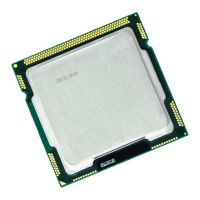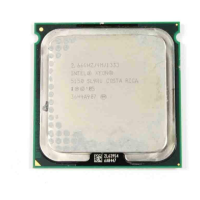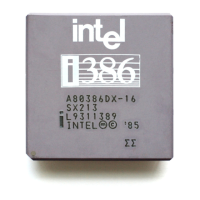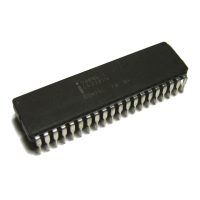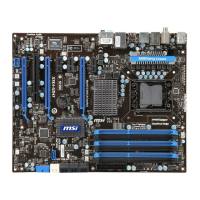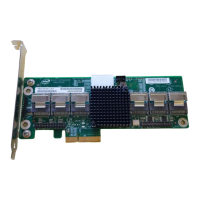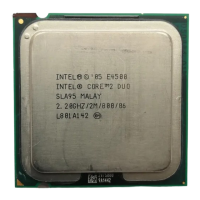Thermal/Mechanical Reference Design
34 Quad-Core Intel® Xeon® Processor 5400 Series TMDG
There are many different ways of implementing fan speed control, including FSC based
on processor ambient temperature, FSC based on processor Digital Thermal Sensor
(DTS) temperature or a combination of the two. If FSC is based only on the processor
ambient temperature, low acoustic targets can be achieved under low ambient
temperature conditions. However, the acoustics cannot be optimized based on the
behavior of the processor temperature. If FSC is based only on the Digital Thermal
Sensor, sustained temperatures above T
CONTROL
drives fans to maximum RPM. If FSC is
based both on ambient and Digital Thermal Sensor, ambient temperature can be used
to scale the fan RPM controlled by the Digital Thermal Sensor. This would result in an
optimal acoustic performance. Regardless of which scheme is employed, system
designers must ensure that the Thermal Profile specification is met when the processor
Digital Thermal Sensor temperature exceeds the T
CONTOL
value for a given processor.
2.4.2 Processor Thermal Characterization Parameter
Relationships
The idea of a “thermal characterization parameter”, Ψ (psi), is a convenient way to
characterize the performance needed for the thermal solution and to compare thermal
solutions in identical conditions (heating source, local ambient conditions). A thermal
characterization parameter is convenient in that it is calculated using total package
power, whereas actual thermal resistance, θ (theta), is calculated using actual power
dissipated between two points. Measuring actual power dissipated into the heatsink is
difficult, since some of the power is dissipated via heat transfer into the socket and
board. Be aware, however, of the limitations of lumped parameters such as Ψ when it
comes to a real design. Heat transfer is a three-dimensional phenomenon that can
rarely be accurately and easily modeled by lump values.
The case-to-local ambient thermal characterization parameter value (Ψ
CA
) is used as a
measure of the thermal performance of the overall thermal solution that is attached to
the processor package. It is defined by the following equation, and measured in units of
°C/W:
Equation 2-3.Ψ
CA
= (T
CASE
- T
LA
) /
TDP
Where:
Ψ
CA
= Case-to-local ambient thermal characterization parameter (°C/W).
T
CASE
= Processor case temperature (°C).
T
LA
= Local ambient temperature in chassis at processor (°C).
TDP = TDP dissipation (W) (assumes all power dissipates through the
integrated heat spreader (IHS)).
Table 2-6. Fan Speed Control, T
CONTROL
and DTS Relationship
Condition FSC Scheme
DTS ≤ T
CONTROL
FSC can adjust fan speed to maintain DTS ≤ T
CONTROL
(low acoustic region).
DTS >T
CONTROL
FSC should adjust fan speed to keep T
CASE
at or below the Thermal Profile
specification (increased acoustic region).

